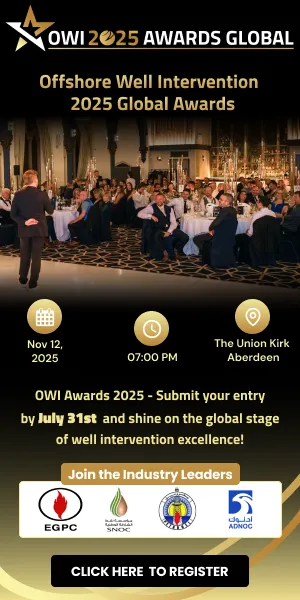Construction projects are growing in scale and complexity, demanding smarter ways to manage cost, time, and performance. ProjectVIEW ERP by DANAOS Projects brings all these elements together in a single platform, helping contractors maintain control and drive efficiency from planning to execution. Read on:
Driving Saudi Arabia’s construction digital transformation
Saudi Arabia’s Vision 2030 places digital transformation at the core of its economic evolution—demanding not just digitisation, but specialised transformation tailored to each sector’s unique workflows. In construction, mining, and project-based fabrication—industries that form an interconnected value chain—success relies on systems capable of managing complexity, cost, and accountability from bid to execution.
As each sector feeds into the other—mining, fabrication, and construction—data integration across all three domains becomes critical to achieving visibility, control, and efficiency throughout the entire project lifecycle.
ProjectVIEW ERP by DANAOS empowers contractors and enterprises across all project-based industries—construction, mining, and fabrication—to build a better world through data-driven precision and unified control. By integrating time, cost, and performance into one intelligent platform, it unifies fragmented processes into a connected value chain—driving efficiency, accountability, and agility for every project-based industry under Vision 2030.
Why Saudi contractors need a construction-specific ERP solution
Despite their size and sophistication, many contractors in KSA still rely on decoupled, non–industry-specific systems—one for finance, another for scheduling, and countless spreadsheets for cost tracking—creating silos that limit visibility, accuracy, and control.
This fragmentation leads to:
• Cost overruns caused by delayed information flow between site and office.
• Inaccurate budgets due to disconnected BoQ and resource data.
• Limited visibility into project progress and productivity.
A construction-specific ERP like DANAOS ProjectVIEW ERP unifies every process—from design and estimation to procurement, fabrication, and site execution—into a single command centre, delivering one version of the truth across all projects and operations.
Developed internationally, DANAOS ProjectVIEW ERP is an industry-specific solution purpose-built for the realities of construction and fabrication in Saudi Arabia. Tailored for Saudi contractors and manufacturers, it delivers an end-to-end project management and cost control ecosystem that enforces accountability, and measurable performance through real-time cost control and analytics, fully aligned with the Kingdom’s operational standards and Vision 2030 objectives.
ProjectVIEW ERP
Unlike generic ERP systems, ProjectVIEW ERP has been designed by construction experts for the construction-specific and project-based manufacturing industries. Its architecture revolves around three fundamental pillars:
• BoQ ↔ WBS ↔ Cost codes integration for absolute project transparency.
• Procurement and warehouse management with eRFQ portals for suppliers and subcontractors.
• Integrated HR, payroll, and machinery management ensuring real cost allocation per project.
This modular approach transforms ProjectVIEW ERP into the definitive construction ERP software in Saudi Arabia, delivering an all-encompassing project cost control system that operates at an enterprise-wide scale and seamlessly integrates with other ERP systems when required.

Fully Compliant with Saudi regulations
Regulatory compliance is a top priority for every Saudi enterprise. ProjectVIEW ERP is ZATCA-compliant—fully supporting Phase 2 e-invoicing with XML file generation, QR codes, and real-time integration with ZATCA’s Fatoora system. DANAOS Projects ensures its solution adheres to Saudi VAT ERP system rules and provides seamless e-invoicing software workflows.
Real-time project performance
The BoQ–WBS–Cost Code integration is ProjectVIEW’s DNA. This triad delivers real-time construction performance monitoring, linking planning, cost control, and execution into a single data model.
Contractors gain immediate insights into budget-versus-actual performance, resource productivity, and deviation alerts—empowering project managers to take corrective actions before overruns occur while aligning financial outcomes with project costs and payments.
Seamless integration with multiple systems
ProjectVIEW ERP operates as an centralised ERP ecosystem, natively integrating with Oracle Primavera, Microsoft Project, and BIM systems such as Revit, Navisworks, and Tekla. Through these integrations, ProjectVIEW synchronises schedules, quantities, and costs—delivering a unified digital thread across planning, design, and execution. This ensures total synchronisation between Primavera integration ERP, BIM ERP Saudi Arabia, and construction scheduling integration environments.
Cloud-ready and scalable
Built and running on a Microsoft Azure Cloud environment—private and dedicated to each client—or deployed directly on the client’s preferred premises, ProjectVIEW ERP is cloud-ready and fully scalable, making it ideal for Saudi Arabia’s giga-projects and multi-tenant environments such as NEOM, The Red Sea, Diriyah Gate, and Qiddiya. Its architecture enables multi-company, multi-project, and multilingual environments, providing centralised control with distributed access across contractors, consultants, suppliers and subcontractors.
ProjectVIEW ERP is hosted on ISO-certified cloud infrastructure, complying with:
• ISO 27001 (Information Security)
• ISO 20000 (IT Service Management)
• ISO 9001 (Quality Management)
• ISO 27018 (Data Protection)
• ISO 14001 (Environmental Management)
ProjectVIEW ERP transforms financial management into a live performance cockpit. Through real-time dashboards, cash-flow projections, and budget vs. actual analytics, financial managers gain a consolidated view across multiple projects. The system integrates directly with accounts payable, receivables, and subcontractor ledgers—delivering true project accounting system KSA functionality. For executives, it offers predictive insights that drive profitability through robust construction finance management software dashboards .
Why leading Saudi contractors choose ProjectVIEW ERP
From large EPC contractors to infrastructure developers and marine construction firms, Saudi Arabia’s leading companies rely on ProjectVIEW ERP to achieve operational excellence. By enforcing a unified project structure (BoQ–WBS–Cost Codes), ensuring ZATCA compliance, and supporting both office-to-site collaboration and mobile access, ProjectVIEW ERP has established itself as the top ERP software Saudi Arabia and the preferred construction management ERP system for visionary contractors driving Vision 2030.









